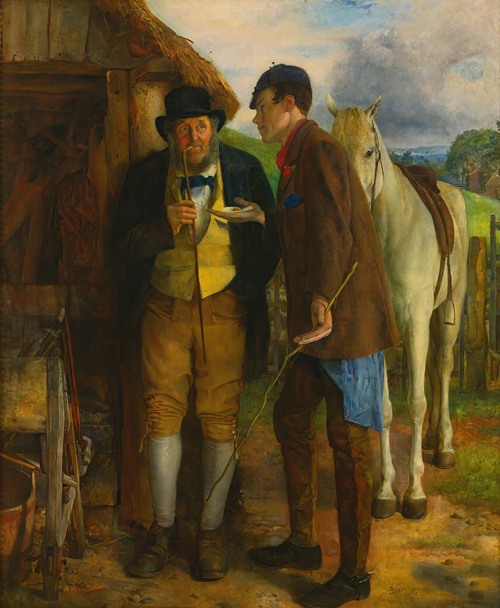 To address this downside, we use the same methods from Robinson et al., and apply them to our India research space. Agriculture accounts for 14% of India’s GDP and is the principal supply of revenue for roughly 50% of the Indian inhabitants (Jha et al., 2015). Small and marginal farmers, who have a area dimension of less than 2 hectares, make up over 80% of India’s agricultural inhabitants (Agriculture Census Division, 2014).111In India, a “marginal” farmer cultivates agrictultrual land up to 1 hectare, and a “small” farmer cultivates land from 1 to 2 hectares (Agriculture Census Division, 2014). An overview of challenges and alternatives for small farmers in India is supplied by Mahendra Dev (2014). Many of these farmers’ incomes are closely tied to profits from selling their produce. The USAID Demographic and Health Survey (DHS) program performs surveys for growing countries usually every 5 years, and every survey prices anywhere from 1.1 million to 9.7 million USD (Doupe et al., 2016). The census surveys are even dearer in developed nations like Europe, with a median cost of USD 5.57 per capita in 2010 (UN, 2014). For some international locations with financial difficulties or political instability, the census is carried out less regularly, as few as once every few decades (UN, 2016a, b).
To address this downside, we use the same methods from Robinson et al., and apply them to our India research space. Agriculture accounts for 14% of India’s GDP and is the principal supply of revenue for roughly 50% of the Indian inhabitants (Jha et al., 2015). Small and marginal farmers, who have a area dimension of less than 2 hectares, make up over 80% of India’s agricultural inhabitants (Agriculture Census Division, 2014).111In India, a “marginal” farmer cultivates agrictultrual land up to 1 hectare, and a “small” farmer cultivates land from 1 to 2 hectares (Agriculture Census Division, 2014). An overview of challenges and alternatives for small farmers in India is supplied by Mahendra Dev (2014). Many of these farmers’ incomes are closely tied to profits from selling their produce. The USAID Demographic and Health Survey (DHS) program performs surveys for growing countries usually every 5 years, and every survey prices anywhere from 1.1 million to 9.7 million USD (Doupe et al., 2016). The census surveys are even dearer in developed nations like Europe, with a median cost of USD 5.57 per capita in 2010 (UN, 2014). For some international locations with financial difficulties or political instability, the census is carried out less regularly, as few as once every few decades (UN, 2016a, b).
 First, the authors used a program written in Python to scrape consumer engagement data (e.g., variety of shares, comments, reactions per submit) from official Facebook pages of the fact-checking initiatives. Our system makes use of collaborative filtering to impute lacking data. The model only uses Landsat imagery as enter, and predicts population in the US with US Census Summary Grids data as ground-fact labels. The outputs of the CNN had been additionally fed right into a second layer gradient boosting model to get an improved inhabitants estimate for each county called CONVAUG, where the census county inhabitants was used as labels. This estimate represents a median (over 24 hours), or ambient population distribution (not simply sleeping location). Instead of disaggregation based mostly on inhabitants estimates from census surveys, some CNN fashions are trained to estimate population straight from satellite tv for pc imagery inputs. The outcomes of our CNN models on the inhabitants density prediction straight from satellite imagery are very promising. Custom Shallow Combo and Deep Combo CNN architectures that better utilize completely different imagery sources. Effectively combine satellite imagery inputs from multiple sources to precisely predict the inhabitants density of a region.
First, the authors used a program written in Python to scrape consumer engagement data (e.g., variety of shares, comments, reactions per submit) from official Facebook pages of the fact-checking initiatives. Our system makes use of collaborative filtering to impute lacking data. The model only uses Landsat imagery as enter, and predicts population in the US with US Census Summary Grids data as ground-fact labels. The outputs of the CNN had been additionally fed right into a second layer gradient boosting model to get an improved inhabitants estimate for each county called CONVAUG, where the census county inhabitants was used as labels. This estimate represents a median (over 24 hours), or ambient population distribution (not simply sleeping location). Instead of disaggregation based mostly on inhabitants estimates from census surveys, some CNN fashions are trained to estimate population straight from satellite tv for pc imagery inputs. The outcomes of our CNN models on the inhabitants density prediction straight from satellite imagery are very promising. Custom Shallow Combo and Deep Combo CNN architectures that better utilize completely different imagery sources. Effectively combine satellite imagery inputs from multiple sources to precisely predict the inhabitants density of a region.
In this challenge, we goal to foretell the inhabitants density of rural villages of India from excessive-decision satellite tv for pc imagery by using Convolutional Neural Network (CNN) fashions. The different CNN architectures described above. None of the above studies predict produce costs for a number of time periods and a number of markets, and their prediction results aren't offered in a style that is easy to interpret and explore by farmers. To keep away from having unsold produce, farmers usually promote their produce at low, unfavorable costs. In particular, by gaining access to chilly storage, farmers can retailer their produce for longer and thus have more flexibility as to when they should promote their harvest by. Accessing digital archives is a prerequisite for fast verification of those claims. Fact Checker principally verifies knowledge-pushed claims. Cold storage can keep produce fresh for longer earlier than they spoil. Chakraborty et al. (2016) predict food costs using each Agmarknet data and information events with the idea that some news occasions (e.g., worker strikes, festivals) can help predict worth shocks. Produce costs contain unexpected noise and outliers on account of both value negotiations and a more error-prone guide data entry course of. Since we don't use subdistrict degree census population for both coaching or prediction enchancment, to make sure the fair comparability, we evaluate to the fashions in the papers also without the assistance of additional information from the aggregated degree, particularly LL-raw from Doupe’s paper and CONVRAW from Robinson’s paper.
Following its CONVRAW method, we convert the predicted class to population density, and aggregate the population on the subdistrict degree. The comparison shows the regression mannequin is better at predicting fine-grained population whereas classification is healthier for aggregate predictions. Evaluations on the aggregate ranges are carried out in earlier papers, which we are going to match with. Similar to earlier papers, we log normalize population density values with base 2, as a result of most villages have small inhabitants density, and only some have giant density. Sentinel-1 photographs have 10-meter resolution, and the raw channel values are converted to visualized RGB photos to match Landsat-8. POSTSUBSCRIPT inhabitants density values for each Indian village. Our floor-fact Indian population dataset comes from a census survey Socio-Economic Caste Census within the 12 months 2011 (SECC, 2011). It consists of more than 500,000 rural villages, masking 32 states, 619 districts, and 5724 sub-districts. This raw evaluation represents probably the most superb-grained comparison possible in our dataset. The evaluation outcomes are shown as LandScan mannequin in Table 2. It has good efficiency in estimating aggregated population on subdistrict degree, however it doesn’t perform properly on per-village level.












0 komentar:
Posting Komentar